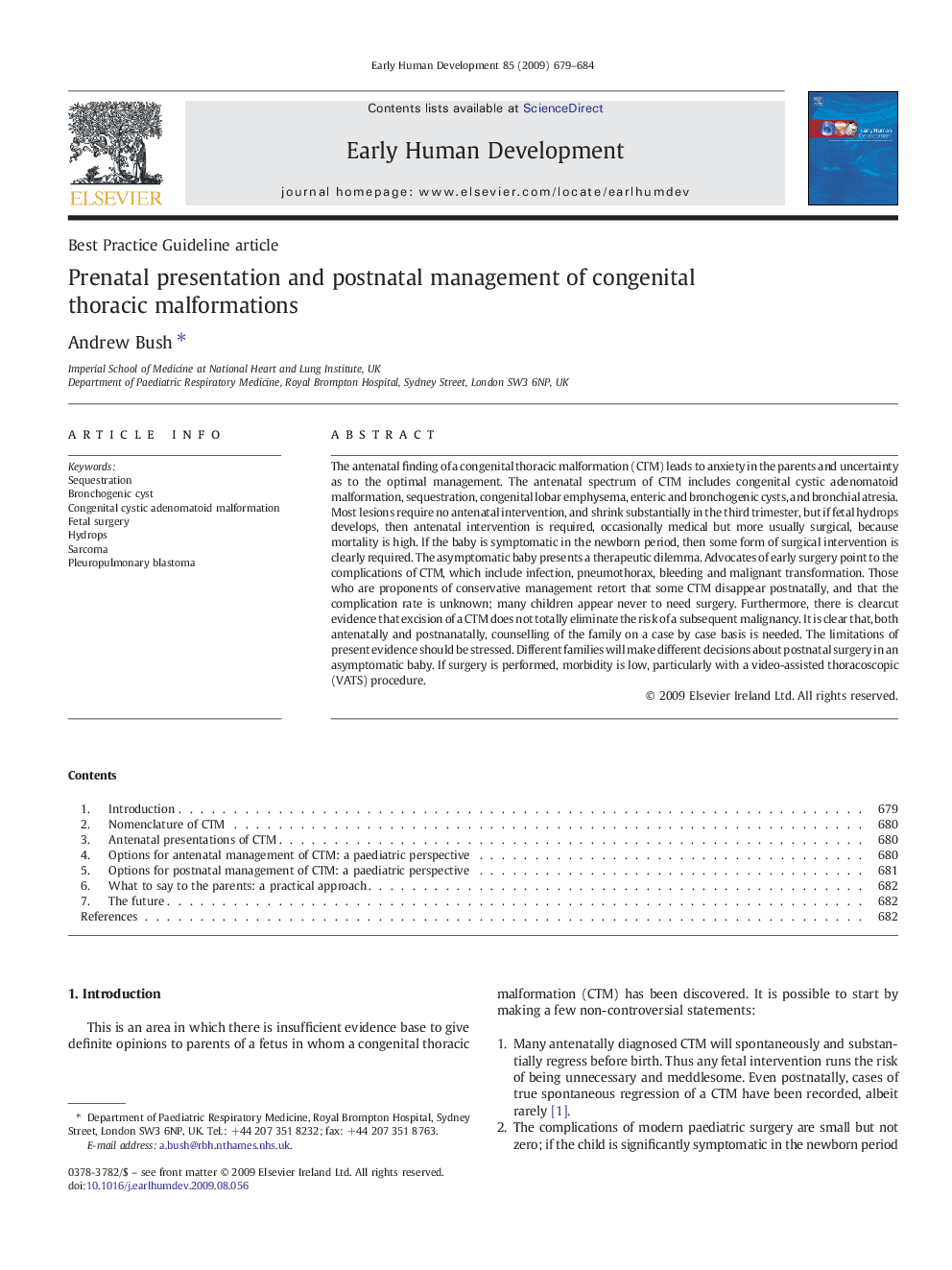| کد مقاله | کد نشریه | سال انتشار | مقاله انگلیسی | نسخه تمام متن |
|---|---|---|---|---|
| 3917706 | 1252145 | 2009 | 6 صفحه PDF | دانلود رایگان |

The antenatal finding of a congenital thoracic malformation (CTM) leads to anxiety in the parents and uncertainty as to the optimal management. The antenatal spectrum of CTM includes congenital cystic adenomatoid malformation, sequestration, congenital lobar emphysema, enteric and bronchogenic cysts, and bronchial atresia. Most lesions require no antenatal intervention, and shrink substantially in the third trimester, but if fetal hydrops develops, then antenatal intervention is required, occasionally medical but more usually surgical, because mortality is high. If the baby is symptomatic in the newborn period, then some form of surgical intervention is clearly required. The asymptomatic baby presents a therapeutic dilemma. Advocates of early surgery point to the complications of CTM, which include infection, pneumothorax, bleeding and malignant transformation. Those who are proponents of conservative management retort that some CTM disappear postnatally, and that the complication rate is unknown; many children appear never to need surgery. Furthermore, there is clearcut evidence that excision of a CTM does not totally eliminate the risk of a subsequent malignancy. It is clear that, both antenatally and postnanatally, counselling of the family on a case by case basis is needed. The limitations of present evidence should be stressed. Different families will make different decisions about postnatal surgery in an asymptomatic baby. If surgery is performed, morbidity is low, particularly with a video-assisted thoracoscopic (VATS) procedure.
Journal: Early Human Development - Volume 85, Issue 11, November 2009, Pages 679–684